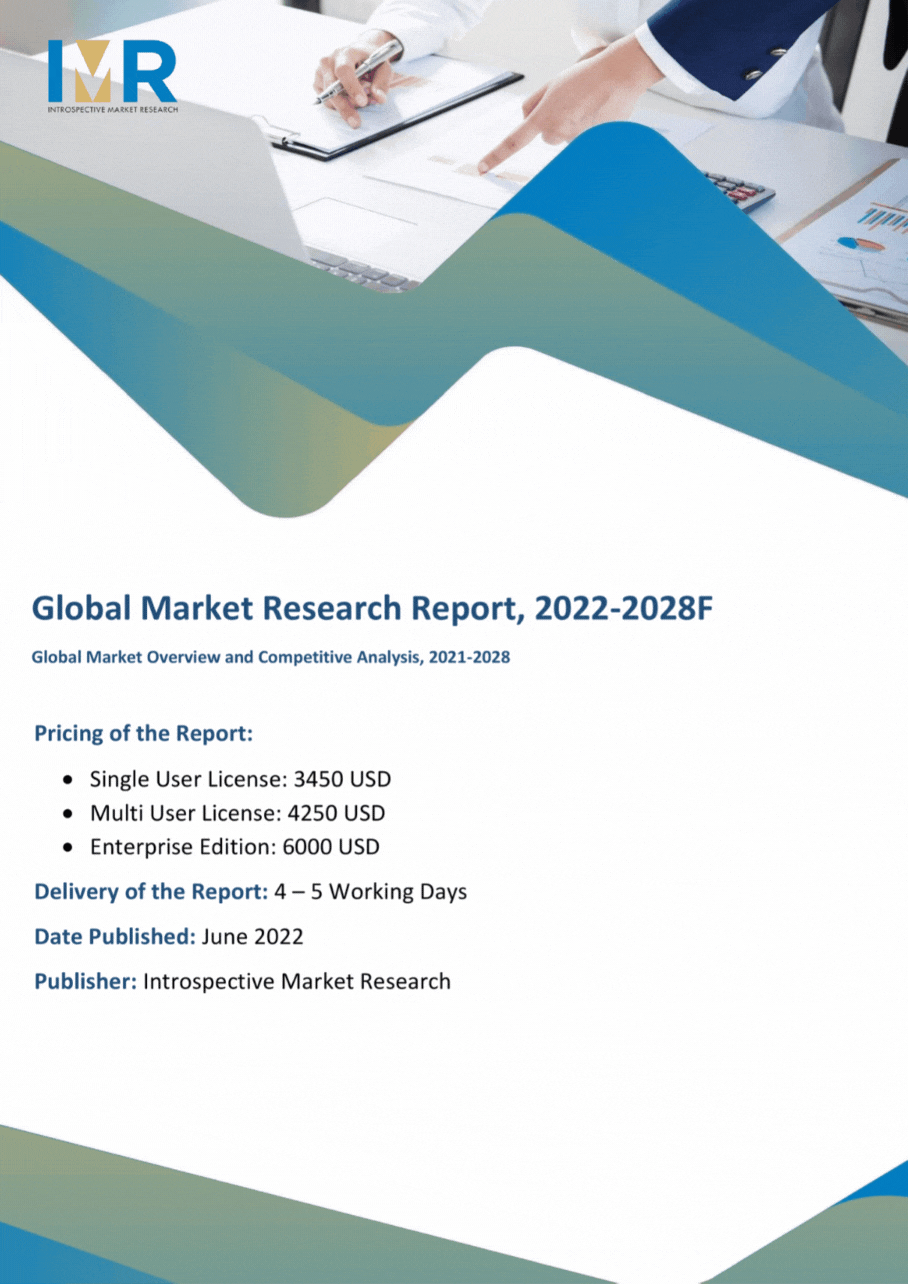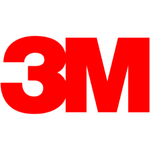Controlled Environment Agriculture Market Synopsis
Controlled Environment Agriculture Market Size Was Valued at USD 90.32 Billion in 2023 and is Projected to Reach USD 221.84 Billion by 2032, Growing at a CAGR of 10.5% From 2024-2032.
Controlled Environment Agriculture (CEA) refers to an innovative and highly efficient approach to crop cultivation that takes place within enclosed, controlled environments such as greenhouses, vertical farms, or indoor facilities. The defining characteristic of CEA is the meticulous regulation and optimization of environmental factors like temperature, humidity, lighting, carbon dioxide levels, and nutrient delivery to create the ideal conditions for plant growth. This method contrasts with traditional open-field farming, where crops are subject to the unpredictable and often adverse effects of weather, pests, and other external variables.
- CEA systems are designed to mimic and, in many cases, surpass the best possible natural growing conditions for plants, allowing for year-round production regardless of external climate conditions. This level of control enables growers to fine-tune the growth process, resulting in increased crop yields, faster growth rates, and higher-quality produce. Moreover, CEA techniques often require less water and fewer pesticides than conventional agriculture, making them more sustainable and environmentally friendly.
- The CEA market has experienced remarkable growth in recent years due to several factors. First, the world's population is steadily increasing, leading to greater demands for fresh and nutritious food. Additionally, urbanization is on the rise, with more people living in cities and driving the need for locally sourced produce. CEA addresses both challenges by offering a means to cultivate crops in urban settings, reducing the carbon footprint associated with long-distance food transportation.

The Controlled Environment Agriculture Market Trend Analysis
Growing Demand for Fresh & Healthy Food to Help the Market Grow
- The growing demand for fresh and healthy food is a significant driver of the Controlled Environment Agriculture (CEA) market. In recent years, consumers have become increasingly conscious of their dietary choices and are prioritizing fresh, nutritious produce in their diets. This shift in consumer preferences has created a strong market demand for crops that are free from pesticides, grown sustainably, and available year-round.
- CEA offers a compelling solution to meet this demand by providing a controlled and optimized environment for crop cultivation. It allows for the production of fruits, vegetables, and herbs that are not only free from harmful chemicals but also consistently high in quality and flavor. Moreover, CEA enables urban and local farming, reducing the time and distance between harvest and consumption, which further enhances the freshness of the produce.
- As health-conscious consumers seek out options that align with their well-being goals, the CEA market stands to benefit significantly. The ability to grow crops in a controlled environment not only ensures the absence of contaminants but also allows for the cultivation of specialty and exotic crops that might be challenging to grow in traditional open-field agriculture.
Technological Advancements
- Technological advancements represent a significant opportunity for the Controlled Environment Agriculture (CEA) market. Over the past few years, rapid progress in agricultural technology has transformed the way crops are grown within controlled environments such as greenhouses, vertical farms, and indoor facilities. These advancements are poised to drive the growth of the CEA sector in several crucial ways.
- Automation and precision technology have revolutionized crop management in controlled environments. Robotics and AI-driven systems can monitor and adjust factors like temperature, humidity, lighting, and nutrient levels with remarkable precision. This not only reduces the need for manual labor but also ensures optimal growing conditions, leading to higher crop yields and improved resource efficiency.
- Additionally, data analytics and sensor technologies are enabling data-driven decision-making in CEA. Real-time monitoring of plant health and environmental conditions allows growers to make proactive adjustments, resulting in better crop quality and reduced resource wastage. This data-driven approach also contributes to sustainable practices as it minimizes the use of water, energy, and nutrients.
Controlled Environment Agriculture Market Segment Analysis
Controlled Environment Agriculture Market segments cover the Crop Growing Method and Components. By hydroponics segment is Anticipated to Dominate the Market Over the Forecast period.
- The hydroponics growing method indeed holds a dominant position within the Controlled Environment Agriculture (CEA) market. Hydroponics is a soilless cultivation technique that involves growing plants in nutrient-rich water solutions, often with the support of inert mediums like perlite or coco coir. Several factors contribute to the prominence of hydroponics in the CEA landscape.
- Hydroponics offers unparalleled control over the growing environment. Growers can precisely manage nutrient levels, pH, temperature, and humidity, ensuring optimal conditions for plant growth. This level of control results in faster growth rates, increased crop yields, and the ability to grow crops year-round, irrespective of external weather conditions. Such advantages make hydroponics an attractive choice for CEA operations aiming to maximize productivity.
- Hydroponics is inherently resource-efficient. It typically uses less water than traditional soil-based agriculture, making it a sustainable choice in regions with water scarcity or where water conservation is a priority. Additionally, the controlled environment of hydroponic systems reduces the need for pesticides and herbicides, aligning with the growing consumer demand for chemical-free and organic produce.
Controlled Environment Agriculture Market Regional Analysis:
Europe is dominating the Market Over the Forecast Period.
- Europe region is expected to hold the largest market share with revenue growth. Rapid technological advancement, urbanization, and high demand for vegetables and fruits are some factors that made Europe the largest player. Moreover, the European commercial greenhouse is considered the most energy-intensive sector in agriculture. Europe was the first to enforce advanced practices in greenhouses, especially in countries like Spain, Italy, and Netherlands, where big areas are under greenhouse cultivation. Also, government initiatives for promoting greenhouse farming are boosting the growth of commercial greenhouses. Some of the leading greenhouse-producing areas in Europe are Spain with around 46,000 hectares, Italy with 25,000 hectares, France with 9,500 hectares, and Greece with 3,800 hectares.
Controlled Environment Agriculture Market Key Player
- Illumitex Inc. (United States)
- Agritecture (United States)
- Urban Crops (Belgium)
- AgroTech Farm (Singapore)
- Aero Farms
- Jingpeng
- Infinite Harvest
- Mirai
- Lufa Farms
- Green Sense Farms
- Metro Farms
- Plenty (Bright Farms)
- Greenland
- Scafil
- Sky Greens
- Idea Protected Horticulture
- Metropolis Farms
- Gotham Greens
- Garden Fresh Farms
Key Industry Developments in the Controlled Environment Agriculture Marke
- In May 2024, Saffron Tech introduced a cutting-edge facility incorporating Controlled Environment Agriculture methods and an autonomous cultivation system for efficient saffron farming. This innovation enables the integration of AI logic to enhance productivity and quality. The advancement is ideal for expanding saffron-related products in beauty, wellness, and nutraceutical industries due to the growing demand for high-quality saffron.
- In March 2024, Meister Media Worldwide, publisher of Greenhouse Grower, launched CEAg World, a new global brand dedicated to advancing food grown in controlled environments. This includes various industry segments such as greenhouses, hoop houses, high tunnels, vertical farms, etc. CEAg World's initial focus is on greenhouse-grown produce in the U.S. and Canada, under the brand CEAg World Greenhouse Produce.
|
Controlled Environment Agriculture Market |
|||
|
Base Year: |
2023 |
Forecast Period: |
2024-2032 |
|
Historical Data: |
2017 to 2023 |
Market Size in 2023: |
USD 90.32 Bn. |
|
Forecast Period 2024-32 CAGR: |
10.5% |
Market Size in 2032: |
USD 221.84 Bn. |
|
Segments Covered: |
By Crop |
|
|
|
By Growing Methods |
|
||
|
By Components |
|
||
|
By Region |
|
||
|
Key Market Drivers: |
|
||
|
Key Market Restraints: |
|
||
|
Key Opportunities: |
|
||
|
Companies Covered in the Report: |
|
||
- INTRODUCTION
- RESEARCH OBJECTIVES
- RESEARCH METHODOLOGY
- RESEARCH PROCESS
- SCOPE AND COVERAGE
- Market Definition
- Key Questions Answered
- MARKET SEGMENTATION
- EXECUTIVE SUMMARY
- MARKET OVERVIEW
- GROWTH OPPORTUNITIES BY SEGMENT
- MARKET LANDSCAPE
- PORTER’S FIVE FORCES ANALYSIS
- Bargaining Power Of Supplier
- Threat Of New Entrants
- Threat Of Substitutes
- Competitive Rivalry
- Bargaining Power Among Buyers
- INDUSTRY VALUE CHAIN ANALYSIS
- MARKET DYNAMICS
- Drivers
- Restraints
- Opportunities
- Challenges
- MARKET TREND ANALYSIS
- REGULATORY LANDSCAPE
- PESTLE ANALYSIS
- PRICE TREND ANALYSIS
- PATENT ANALYSIS
- TECHNOLOGY EVALUATION
- ANALYSIS OF THE IMPACT OF COVID-19
- Impact On The Overall Market
- Impact On The Supply Chain
- Impact On The Key Manufacturers
- Impact On The Pricing
- Post COVID Situation
- MARKET IMPACT OF THE RUSSIA-UKRAINE WAR
- Geopolitical Market Disruptions
- Supply Chain Disruptions
- Instability in Emerging Markets
- ECOSYSTEM
- PORTER’S FIVE FORCES ANALYSIS
- CONTROLLED ENVIRONMENT AGRICULTURE MARKET BY CROP (2017-2032)
- CONTROLLED ENVIRONMENT AGRICULTURE MARKET SNAPSHOT AND GROWTH ENGINE
- MARKET OVERVIEW
- LEAFY GREENS
- Introduction And Market Overview
- Historic And Forecasted Market Size in Value (2017 – 2032F)
- Historic And Forecasted Market Size in Volume (2017 – 2032F)
- Key Market Trends, Growth Factors And Opportunities
- Geographic Segmentation Analysis
- TOMATO
- STRAWBERRIES
- CUCUMBER
- CANNABIS
- OTHERS
- CONTROLLED ENVIRONMENT AGRICULTURE MARKET BY GROWING METHODS (2017-2032)
- CONTROLLED ENVIRONMENT AGRICULTURE MARKET SNAPSHOT AND GROWTH ENGINE
- MARKET OVERVIEW
- AEROPONICS
- Introduction And Market Overview
- Historic And Forecasted Market Size in Value (2017 – 2032F)
- Historic And Forecasted Market Size in Volume (2017 – 2032F)
- Key Market Trends, Growth Factors And Opportunities
- Geographic Segmentation Analysis
- HYDROPONICS
- AQUAPONICS
- OTHERS
- CONTROLLED ENVIRONMENT AGRICULTURE MARKET BY COMPONENTS (2017-2032)
- CONTROLLED ENVIRONMENT AGRICULTURE MARKET SNAPSHOT AND GROWTH ENGINE
- MARKET OVERVIEW
- LIGHTING
- Introduction And Market Overview
- Historic And Forecasted Market Size in Value (2017 – 2032F)
- Historic And Forecasted Market Size in Volume (2017 – 2032F)
- Key Market Trends, Growth Factors And Opportunities
- Geographic Segmentation Analysis
- GROWING MEDIA
- NUTRIENTS
- OTHERS
- COMPANY PROFILES AND COMPETITIVE ANALYSIS
- COMPETITIVE LANDSCAPE
- Competitive Positioning
- CONTROLLED ENVIRONMENT AGRICULTURE Market Share By Manufacturer (2023)
- Industry BCG Matrix
- Heat Map Analysis
- Mergers & Acquisitions
- AERO FARMS
- Company Overview
- Key Executives
- Company Snapshot
- Role of the Company in the Market
- Sustainability and Social Responsibility
- Operating Business Segments
- Product Portfolio
- Business Performance (Production Volume, Sales Volume, Sales Margin, Production Capacity, Capacity Utilization Rate)
- Key Strategic Moves And Recent Developments
- SWOT Analysis
- JINGPENG
- INFINITE HARVEST
- MIRAI
- LUFA FARMS
- GREEN SENSE FARMS
- METRO FARMS
- PLENTY (BRIGHT FARMS)
- GREENLAND
- SCAFIL
- SKY GREENS
- IDEA PROTECTED HORTICULTURE
- METROPOLIS FARMS
- GOTHAM GREENS
- GARDEN FRESH FARMS
- COMPETITIVE LANDSCAPE
- GLOBAL CONTROLLED ENVIRONMENT AGRICULTURE MARKET BY REGION
- OVERVIEW
- NORTH AMERICA
- Key Market Trends, Growth Factors And Opportunities
- Impact Of Covid-19
- Key Manufacturers
- Historic And Forecasted Market Size By Crop
- Historic And Forecasted Market Size By Growing Method
- Historic And Forecasted Market Size By Component
- Historic And Forecasted Market Size By Country
- USA
- Canada
- Mexico
- EASTERN EUROPE
- Key Market Trends, Growth Factors And Opportunities
- Impact Of Covid-19
- Key Manufacturers
- Historic And Forecasted Market Size By Segments
- Historic And Forecasted Market Size By Country
- Russia
- Bulgaria
- The Czech Republic
- Hungary
- Poland
- Romania
- Rest Of Eastern Europe
- WESTERN EUROPE
- Key Market Trends, Growth Factors And Opportunities
- Impact Of Covid-19
- Key Manufacturers
- Historic And Forecasted Market Size By Segments
- Historic And Forecasted Market Size By Country
- Germany
- United Kingdom
- France
- The Netherlands
- Italy
- Spain
- Rest Of Western Europe
- ASIA PACIFIC
- Key Market Trends, Growth Factors And Opportunities
- Impact Of Covid-19
- Key Manufacturers
- Historic And Forecasted Market Size By Segments
- Historic And Forecasted Market Size By Country
- China
- India
- Japan
- South Korea
- Malaysia
- Thailand
- Vietnam
- The Philippines
- Australia
- New-Zealand
- Rest Of APAC
- MIDDLE EAST & AFRICA
- Key Market Trends, Growth Factors And Opportunities
- Impact Of Covid-19
- Key Manufacturers
- Historic And Forecasted Market Size By Segments
- Historic And Forecasted Market Size By Country
- Turkey
- Bahrain
- Kuwait
- Saudi Arabia
- Qatar
- UAE
- Israel
- South Africa
- SOUTH AMERICA
- Key Market Trends, Growth Factors And Opportunities
- Impact Of Covid-19
- Key Manufacturers
- Historic And Forecasted Market Size By Segments
- Historic And Forecasted Market Size By Country
- Brazil
- Argentina
- Rest of South America
- INVESTMENT ANALYSIS
- ANALYST VIEWPOINT AND CONCLUSION
- Recommendations and Concluding Analysis
- Potential Market Strategies
|
Controlled Environment Agriculture Market |
|||
|
Base Year: |
2023 |
Forecast Period: |
2024-2032 |
|
Historical Data: |
2017 to 2023 |
Market Size in 2023: |
USD 90.32 Bn. |
|
Forecast Period 2024-32 CAGR: |
10.5% |
Market Size in 2032: |
USD 221.84 Bn. |
|
Segments Covered: |
By Crop |
|
|
|
By Growing Methods |
|
||
|
By Components |
|
||
|
By Region |
|
||
|
Key Market Drivers: |
|
||
|
Key Market Restraints: |
|
||
|
Key Opportunities: |
|
||
|
Companies Covered in the Report: |
|
||
LIST OF TABLES
TABLE 001. EXECUTIVE SUMMARY
TABLE 002. CONTROLLED ENVIRONMENT AGRICULTURE MARKET BARGAINING POWER OF SUPPLIERS
TABLE 003. CONTROLLED ENVIRONMENT AGRICULTURE MARKET BARGAINING POWER OF CUSTOMERS
TABLE 004. CONTROLLED ENVIRONMENT AGRICULTURE MARKET COMPETITIVE RIVALRY
TABLE 005. CONTROLLED ENVIRONMENT AGRICULTURE MARKET THREAT OF NEW ENTRANTS
TABLE 006. CONTROLLED ENVIRONMENT AGRICULTURE MARKET THREAT OF SUBSTITUTES
TABLE 007. CONTROLLED ENVIRONMENT AGRICULTURE MARKET BY CROP
TABLE 008. LEAFY GREENS MARKET OVERVIEW (2016-2030)
TABLE 009. TOMATO MARKET OVERVIEW (2016-2030)
TABLE 010. STRAWBERRIES MARKET OVERVIEW (2016-2030)
TABLE 011. CUCUMBER MARKET OVERVIEW (2016-2030)
TABLE 012. CANNABIS MARKET OVERVIEW (2016-2030)
TABLE 013. OTHERS MARKET OVERVIEW (2016-2030)
TABLE 014. CONTROLLED ENVIRONMENT AGRICULTURE MARKET BY GROWING METHODS
TABLE 015. HYDROPONICS MARKET OVERVIEW (2016-2030)
TABLE 016. AQUAPONICS MARKET OVERVIEW (2016-2030)
TABLE 017. AEROPONICS MARKET OVERVIEW (2016-2030)
TABLE 018. OTHERS MARKET OVERVIEW (2016-2030)
TABLE 019. CONTROLLED ENVIRONMENT AGRICULTURE MARKET BY COMPONENTS
TABLE 020. LIGHTING MARKET OVERVIEW (2016-2030)
TABLE 021. GROWING MEDIA MARKET OVERVIEW (2016-2030)
TABLE 022. NUTRIENTS MARKET OVERVIEW (2016-2030)
TABLE 023. OTHERS MARKET OVERVIEW (2016-2030)
TABLE 024. NORTH AMERICA CONTROLLED ENVIRONMENT AGRICULTURE MARKET, BY CROP (2016-2030)
TABLE 025. NORTH AMERICA CONTROLLED ENVIRONMENT AGRICULTURE MARKET, BY GROWING METHODS (2016-2030)
TABLE 026. NORTH AMERICA CONTROLLED ENVIRONMENT AGRICULTURE MARKET, BY COMPONENTS (2016-2030)
TABLE 027. N CONTROLLED ENVIRONMENT AGRICULTURE MARKET, BY COUNTRY (2016-2030)
TABLE 028. EASTERN EUROPE CONTROLLED ENVIRONMENT AGRICULTURE MARKET, BY CROP (2016-2030)
TABLE 029. EASTERN EUROPE CONTROLLED ENVIRONMENT AGRICULTURE MARKET, BY GROWING METHODS (2016-2030)
TABLE 030. EASTERN EUROPE CONTROLLED ENVIRONMENT AGRICULTURE MARKET, BY COMPONENTS (2016-2030)
TABLE 031. CONTROLLED ENVIRONMENT AGRICULTURE MARKET, BY COUNTRY (2016-2030)
TABLE 032. WESTERN EUROPE CONTROLLED ENVIRONMENT AGRICULTURE MARKET, BY CROP (2016-2030)
TABLE 033. WESTERN EUROPE CONTROLLED ENVIRONMENT AGRICULTURE MARKET, BY GROWING METHODS (2016-2030)
TABLE 034. WESTERN EUROPE CONTROLLED ENVIRONMENT AGRICULTURE MARKET, BY COMPONENTS (2016-2030)
TABLE 035. CONTROLLED ENVIRONMENT AGRICULTURE MARKET, BY COUNTRY (2016-2030)
TABLE 036. ASIA PACIFIC CONTROLLED ENVIRONMENT AGRICULTURE MARKET, BY CROP (2016-2030)
TABLE 037. ASIA PACIFIC CONTROLLED ENVIRONMENT AGRICULTURE MARKET, BY GROWING METHODS (2016-2030)
TABLE 038. ASIA PACIFIC CONTROLLED ENVIRONMENT AGRICULTURE MARKET, BY COMPONENTS (2016-2030)
TABLE 039. CONTROLLED ENVIRONMENT AGRICULTURE MARKET, BY COUNTRY (2016-2030)
TABLE 040. MIDDLE EAST & AFRICA CONTROLLED ENVIRONMENT AGRICULTURE MARKET, BY CROP (2016-2030)
TABLE 041. MIDDLE EAST & AFRICA CONTROLLED ENVIRONMENT AGRICULTURE MARKET, BY GROWING METHODS (2016-2030)
TABLE 042. MIDDLE EAST & AFRICA CONTROLLED ENVIRONMENT AGRICULTURE MARKET, BY COMPONENTS (2016-2030)
TABLE 043. CONTROLLED ENVIRONMENT AGRICULTURE MARKET, BY COUNTRY (2016-2030)
TABLE 044. SOUTH AMERICA CONTROLLED ENVIRONMENT AGRICULTURE MARKET, BY CROP (2016-2030)
TABLE 045. SOUTH AMERICA CONTROLLED ENVIRONMENT AGRICULTURE MARKET, BY GROWING METHODS (2016-2030)
TABLE 046. SOUTH AMERICA CONTROLLED ENVIRONMENT AGRICULTURE MARKET, BY COMPONENTS (2016-2030)
TABLE 047. CONTROLLED ENVIRONMENT AGRICULTURE MARKET, BY COUNTRY (2016-2030)
TABLE 048. AERO FARMS: SNAPSHOT
TABLE 049. AERO FARMS: BUSINESS PERFORMANCE
TABLE 050. AERO FARMS: PRODUCT PORTFOLIO
TABLE 051. AERO FARMS: KEY STRATEGIC MOVES AND DEVELOPMENTS
TABLE 051. JINGPENG: SNAPSHOT
TABLE 052. JINGPENG: BUSINESS PERFORMANCE
TABLE 053. JINGPENG: PRODUCT PORTFOLIO
TABLE 054. JINGPENG: KEY STRATEGIC MOVES AND DEVELOPMENTS
TABLE 054. INFINITE HARVEST: SNAPSHOT
TABLE 055. INFINITE HARVEST: BUSINESS PERFORMANCE
TABLE 056. INFINITE HARVEST: PRODUCT PORTFOLIO
TABLE 057. INFINITE HARVEST: KEY STRATEGIC MOVES AND DEVELOPMENTS
TABLE 057. MIRAI: SNAPSHOT
TABLE 058. MIRAI: BUSINESS PERFORMANCE
TABLE 059. MIRAI: PRODUCT PORTFOLIO
TABLE 060. MIRAI: KEY STRATEGIC MOVES AND DEVELOPMENTS
TABLE 060. LUFA FARMS: SNAPSHOT
TABLE 061. LUFA FARMS: BUSINESS PERFORMANCE
TABLE 062. LUFA FARMS: PRODUCT PORTFOLIO
TABLE 063. LUFA FARMS: KEY STRATEGIC MOVES AND DEVELOPMENTS
TABLE 063. GREEN SENSE FARMS: SNAPSHOT
TABLE 064. GREEN SENSE FARMS: BUSINESS PERFORMANCE
TABLE 065. GREEN SENSE FARMS: PRODUCT PORTFOLIO
TABLE 066. GREEN SENSE FARMS: KEY STRATEGIC MOVES AND DEVELOPMENTS
TABLE 066. METRO FARMS: SNAPSHOT
TABLE 067. METRO FARMS: BUSINESS PERFORMANCE
TABLE 068. METRO FARMS: PRODUCT PORTFOLIO
TABLE 069. METRO FARMS: KEY STRATEGIC MOVES AND DEVELOPMENTS
TABLE 069. PLENTY (BRIGHT FARMS): SNAPSHOT
TABLE 070. PLENTY (BRIGHT FARMS): BUSINESS PERFORMANCE
TABLE 071. PLENTY (BRIGHT FARMS): PRODUCT PORTFOLIO
TABLE 072. PLENTY (BRIGHT FARMS): KEY STRATEGIC MOVES AND DEVELOPMENTS
TABLE 072. GREENLAND: SNAPSHOT
TABLE 073. GREENLAND: BUSINESS PERFORMANCE
TABLE 074. GREENLAND: PRODUCT PORTFOLIO
TABLE 075. GREENLAND: KEY STRATEGIC MOVES AND DEVELOPMENTS
TABLE 075. SCAFIL: SNAPSHOT
TABLE 076. SCAFIL: BUSINESS PERFORMANCE
TABLE 077. SCAFIL: PRODUCT PORTFOLIO
TABLE 078. SCAFIL: KEY STRATEGIC MOVES AND DEVELOPMENTS
TABLE 078. SKY GREENS: SNAPSHOT
TABLE 079. SKY GREENS: BUSINESS PERFORMANCE
TABLE 080. SKY GREENS: PRODUCT PORTFOLIO
TABLE 081. SKY GREENS: KEY STRATEGIC MOVES AND DEVELOPMENTS
TABLE 081. IDEA PROTECTED HORTICULTURE: SNAPSHOT
TABLE 082. IDEA PROTECTED HORTICULTURE: BUSINESS PERFORMANCE
TABLE 083. IDEA PROTECTED HORTICULTURE: PRODUCT PORTFOLIO
TABLE 084. IDEA PROTECTED HORTICULTURE: KEY STRATEGIC MOVES AND DEVELOPMENTS
TABLE 084. METROPOLIS FARMS: SNAPSHOT
TABLE 085. METROPOLIS FARMS: BUSINESS PERFORMANCE
TABLE 086. METROPOLIS FARMS: PRODUCT PORTFOLIO
TABLE 087. METROPOLIS FARMS: KEY STRATEGIC MOVES AND DEVELOPMENTS
TABLE 087. GOTHAM GREENS: SNAPSHOT
TABLE 088. GOTHAM GREENS: BUSINESS PERFORMANCE
TABLE 089. GOTHAM GREENS: PRODUCT PORTFOLIO
TABLE 090. GOTHAM GREENS: KEY STRATEGIC MOVES AND DEVELOPMENTS
TABLE 090. GARDEN FRESH FARMS: SNAPSHOT
TABLE 091. GARDEN FRESH FARMS: BUSINESS PERFORMANCE
TABLE 092. GARDEN FRESH FARMS: PRODUCT PORTFOLIO
TABLE 093. GARDEN FRESH FARMS: KEY STRATEGIC MOVES AND DEVELOPMENTS
TABLE 093. OTHER MAJOR PLAYERS: SNAPSHOT
TABLE 094. OTHER MAJOR PLAYERS: BUSINESS PERFORMANCE
TABLE 095. OTHER MAJOR PLAYERS: PRODUCT PORTFOLIO
TABLE 096. OTHER MAJOR PLAYERS: KEY STRATEGIC MOVES AND DEVELOPMENTS
LIST OF FIGURES
FIGURE 001. YEARS CONSIDERED FOR ANALYSIS
FIGURE 002. SCOPE OF THE STUDY
FIGURE 003. CONTROLLED ENVIRONMENT AGRICULTURE MARKET OVERVIEW BY REGIONS
FIGURE 004. PORTER'S FIVE FORCES ANALYSIS
FIGURE 005. BARGAINING POWER OF SUPPLIERS
FIGURE 006. COMPETITIVE RIVALRYFIGURE 007. THREAT OF NEW ENTRANTS
FIGURE 008. THREAT OF SUBSTITUTES
FIGURE 009. VALUE CHAIN ANALYSIS
FIGURE 010. PESTLE ANALYSIS
FIGURE 011. CONTROLLED ENVIRONMENT AGRICULTURE MARKET OVERVIEW BY CROP
FIGURE 012. LEAFY GREENS MARKET OVERVIEW (2016-2030)
FIGURE 013. TOMATO MARKET OVERVIEW (2016-2030)
FIGURE 014. STRAWBERRIES MARKET OVERVIEW (2016-2030)
FIGURE 015. CUCUMBER MARKET OVERVIEW (2016-2030)
FIGURE 016. CANNABIS MARKET OVERVIEW (2016-2030)
FIGURE 017. OTHERS MARKET OVERVIEW (2016-2030)
FIGURE 018. CONTROLLED ENVIRONMENT AGRICULTURE MARKET OVERVIEW BY GROWING METHODS
FIGURE 019. HYDROPONICS MARKET OVERVIEW (2016-2030)
FIGURE 020. AQUAPONICS MARKET OVERVIEW (2016-2030)
FIGURE 021. AEROPONICS MARKET OVERVIEW (2016-2030)
FIGURE 022. OTHERS MARKET OVERVIEW (2016-2030)
FIGURE 023. CONTROLLED ENVIRONMENT AGRICULTURE MARKET OVERVIEW BY COMPONENTS
FIGURE 024. LIGHTING MARKET OVERVIEW (2016-2030)
FIGURE 025. GROWING MEDIA MARKET OVERVIEW (2016-2030)
FIGURE 026. NUTRIENTS MARKET OVERVIEW (2016-2030)
FIGURE 027. OTHERS MARKET OVERVIEW (2016-2030)
FIGURE 028. NORTH AMERICA CONTROLLED ENVIRONMENT AGRICULTURE MARKET OVERVIEW BY COUNTRY (2016-2030)
FIGURE 029. EASTERN EUROPE CONTROLLED ENVIRONMENT AGRICULTURE MARKET OVERVIEW BY COUNTRY (2016-2030)
FIGURE 030. WESTERN EUROPE CONTROLLED ENVIRONMENT AGRICULTURE MARKET OVERVIEW BY COUNTRY (2016-2030)
FIGURE 031. ASIA PACIFIC CONTROLLED ENVIRONMENT AGRICULTURE MARKET OVERVIEW BY COUNTRY (2016-2030)
FIGURE 032. MIDDLE EAST & AFRICA CONTROLLED ENVIRONMENT AGRICULTURE MARKET OVERVIEW BY COUNTRY (2016-2030)
FIGURE 033. SOUTH AMERICA CONTROLLED ENVIRONMENT AGRICULTURE MARKET OVERVIEW BY COUNTRY (2016-2030)
Frequently Asked Questions :
The forecast period in the Controlled Environment Agriculture Market research report is 2024-2032.
Aero Farms, Jingpeng, Infinite Harvest, Mirai, Lufa Farms, Green Sense Farms, Metro Farms, Plenty (Bright Farms), Greenland, Scafil, Sky Greens, Idea Protected Horticulture, Metropolis Farms, Gotham Greens, Garden Fresh Farms and Other Major Players.
The Controlled Environment Agriculture Market is segmented into Crop, Growing Methods, Components, and region. By Crop, the market is categorized into Leafy Greens, Tomato, Strawberries, Cucumber, Cannabis, Others. By Growing Methods, the market is categorized into Hydroponics, Aquaponics, Aeroponics, Others. By Components, the market is categorized into Lighting, Growing Media, Nutrients, Others. By region, it is analyzed across North America (U.S.; Canada; Mexico), Europe (Germany; U.K.; France; Italy; Russia; Spain, etc.), Asia-Pacific (China; India; Japan; Southeast Asia, etc.), South America (Brazil; Argentina, etc.), Middle East & Africa (Saudi Arabia; South Africa, etc.).
Controlled Environment Agriculture (CEA) refers to an innovative and highly efficient approach to crop cultivation that takes place within enclosed, controlled environments such as greenhouses, vertical farms, or indoor facilities. The defining characteristic of CEA is the meticulous regulation and optimization of environmental factors like temperature, humidity, lighting, carbon dioxide levels, and nutrient delivery to create the ideal conditions for plant growth. This method contrasts with traditional open-field farming, where crops are subject to the unpredictable and often adverse effects of weather, pests, and other external variables.
Controlled Environment Agriculture Market Size Was Valued at USD 90.32 Billion in 2023 and is Projected to Reach USD 221.84 Billion by 2032, Growing at a CAGR of 10.5% From 2024-2032.


































